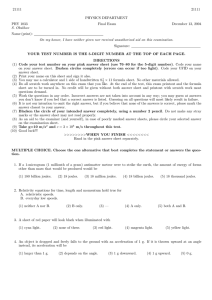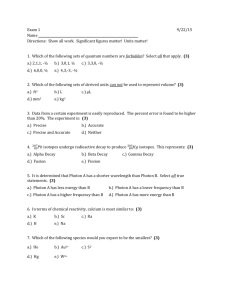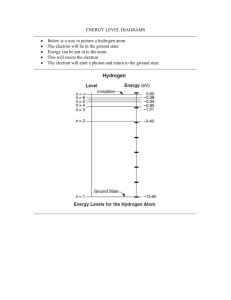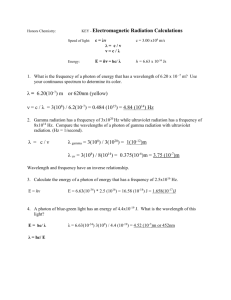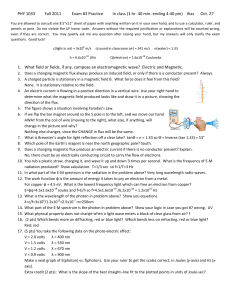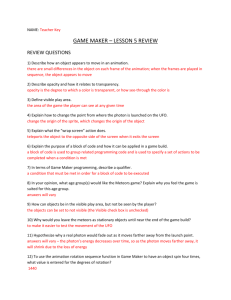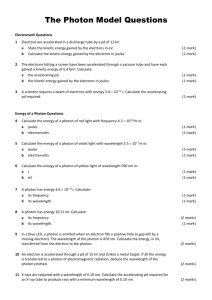Exercise 2: Atoms
advertisement
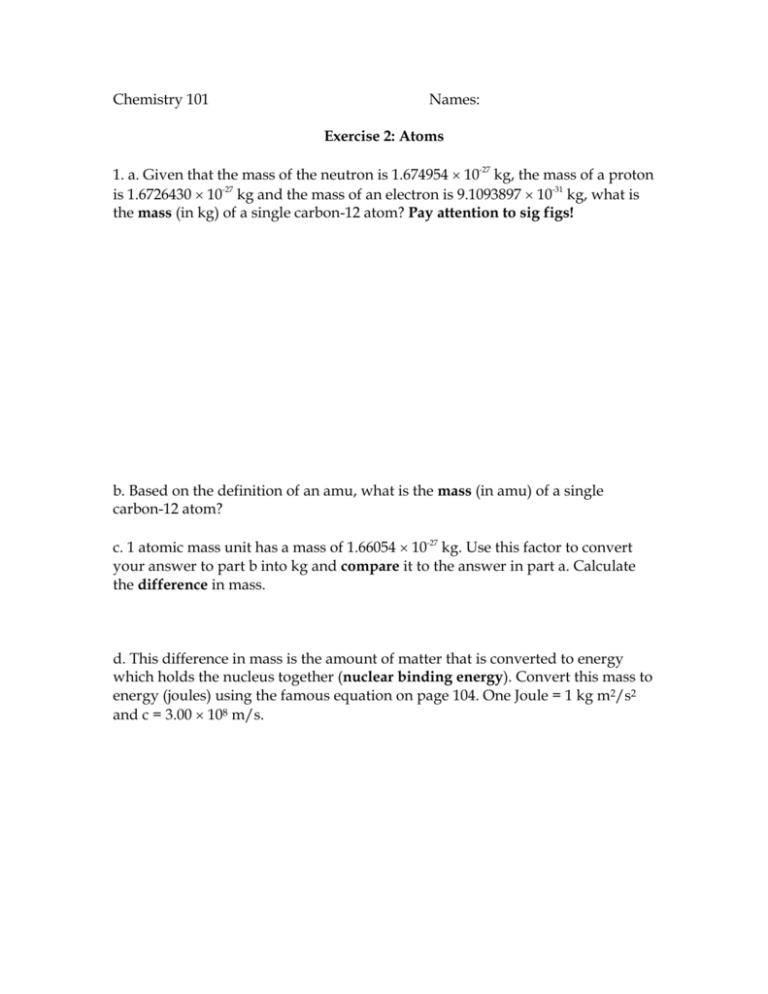
Chemistry 101 Names: Exercise 2: Atoms 1. a. Given that the mass of the neutron is 1.674954 10-27 kg, the mass of a proton is 1.6726430 10-27 kg and the mass of an electron is 9.1093897 10-31 kg, what is the mass (in kg) of a single carbon-12 atom? Pay attention to sig figs! b. Based on the definition of an amu, what is the mass (in amu) of a single carbon-12 atom? c. 1 atomic mass unit has a mass of 1.66054 10-27 kg. Use this factor to convert your answer to part b into kg and compare it to the answer in part a. Calculate the difference in mass. d. This difference in mass is the amount of matter that is converted to energy which holds the nucleus together (nuclear binding energy). Convert this mass to energy (joules) using the famous equation on page 104. One Joule = 1 kg m2/s2 and c = 3.00 108 m/s. 2. Write the chemical symbol for an isotope which has 8 protons, 10 neutrons and 10 electrons. Hint: is this isotope also an ion? 3. Describe the subatomic structure of phosphorus-32, a commonly used “tracer” isotope, indicating the number and placement of subatomic particles, including the electron configuration. 4. The following table shows various properties of chlorine and iodine molecules: Chlorine Molecular formula Boiling point (K) Freezing point (K) Cl2 239 172 I2 457 386.5 Bromine Iodine Fill in the information for the missing line of bromine, given that bromine is between chlorine and iodine in group VIIA. You do not have to look up these values in any reference. 5. Unlike the text’s treatment of electromagnetic (EM) radiation, there is a formula to calculate the number of joules of energy a photon of a particular wavelength of light contains. The formula is E = hc/, where E is the energy of the photon in Joules, h is Planck’s constant = 6.626 10-34 Js (that is, joules times seconds), c is speed of light = 3.00 108 m/s and (the Greek letter lambda) is the wavelength of the photon in meters. The text mentions on page 66 that visible light frequencies range from 4 10-7 m (blue) to 7 10-7 m (red). Calculate the energy of one photon of blue light and one photon of red light and indicate which is the more energetic color.
